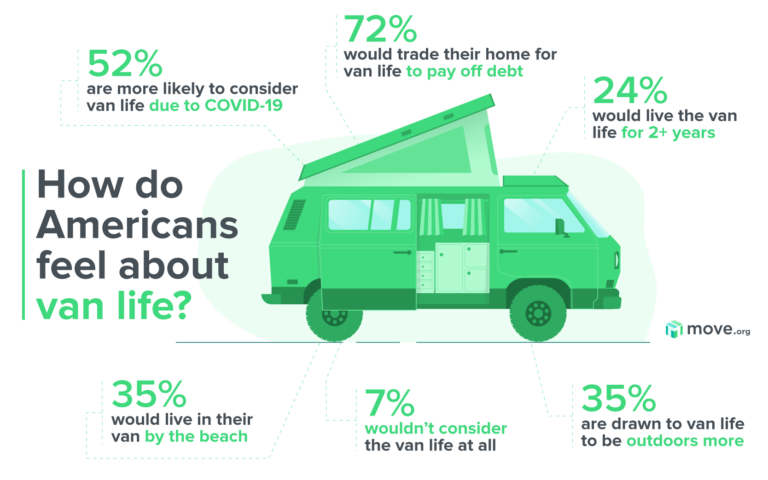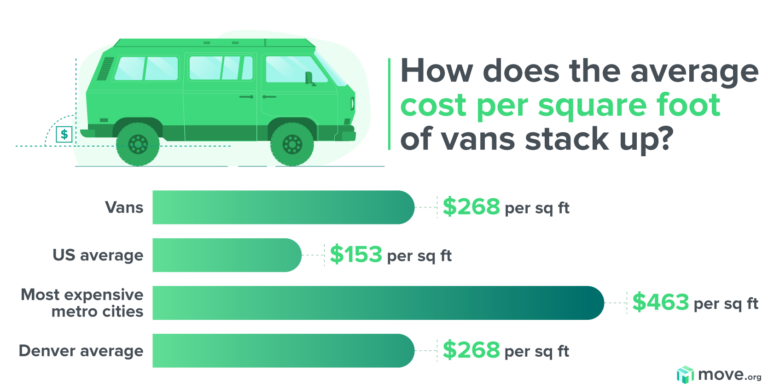There are a lot of costs that go into living in a van. The price of the van, the cost to keep gas in the tank, and routine upkeep costs are the most obvious expenses, but there’s also the cost of converting your van into a livable space.
Van conversions range from spartan to luxurious, so the exact price depends on you. About a third of van conversions end up costing less than $5,000,1 but the sky is pretty much the limit.
Of course, for every cost that goes into van life, there’s a similar (and often higher) cost for living in a house. Between utility bills, HOA dues, property taxes, and other expenses, there’s a hefty price tag not included in your mortgage.
Because most of the costs are impossible to accurately predict, we’re going to just compare the cost of a few popular vans to the cost of homes in metropolitan areas.
The average price of the five most popular live-in vans listed by Curbed is $33,863,2 and the average square footage for these vans is 126 feet—according to specifications we gathered from Motortrends.com.3 This means that on average you should expect to pay about $268 per square foot when you buy a new van that’s large enough to live in.
You could, of course, get a much cheaper van if you went with an older model or got something secondhand. The absolute cheapest option would probably be to find a secondhand van that has already been converted into a livable space. Just make sure the old owner is selling it because they’re giving up on van life, not because something is wrong with the van.
Surprisingly, the median price per square foot for homes across the US is a mere $153. This makes a mortgage seem a lot more affordable than the loan you’d have to take out to buy a van for $268 per square foot.
However, this median includes home prices for small and rural metro areas where home prices are as low as $73 per square foot. Homes in populous metropolitan areas cost much more. In San Jose, the country’s most expensive metro according to Zillow, the median price per square foot is $652.4






